当前位置:网站首页>圖像識別與檢測--筆記
圖像識別與檢測--筆記
2022-07-03 07:26:00 【鹿銜草啊】
圖像識別與檢測
1.Variable
在 Torch 中的 Variable 就是一個存放會變化的值的地方(籃子)。 裏面的值會不停的變化。 裏面的值,就是Tensor張量(雞蛋)。
import torch
from torch.autograd import Variable # torch 中 Variable 模塊
# 准備雞蛋
tensor = torch.FloatTensor([[1,2],[3,4]])
# 把雞蛋放到籃子裏, requires_grad是參不參與誤差反向傳播, 要不要計算梯度
variable = Variable(tensor, requires_grad=True)
print("Tensor:\n" + str(tensor))
print("\n")
print("Variable:\n" + str(variable))

2. Variable 計算, 梯度
t_out = torch.mean(tensor*tensor) # x^2
v_out = torch.mean(variable*variable) # x^2
print(t_out)
print(v_out)
到目前為止, 我們看不出什麼不同, 但是時刻記住, Variable 計算時, 它在背景幕布後面一步步默默地搭建著一個龐大的系統, 叫做計算圖, computational graph. 這個圖是用來幹嘛的? 原來是將所有的計算步驟 (節點) 都連接起來, 最後進行誤差反向傳遞的時候, 一次性將所有 variable 裏面的修改幅度 (梯度) 都計算出來, 而 tensor 就沒有這個能力啦.
v_out = torch.mean(variable*variable)# 就是在計算圖中添加的一個計算步驟, 計算誤差反向傳遞的時候有他一份功勞, 我們就來舉個例子:
v_out.backward() # 模擬 v_out 的誤差反向傳遞
# v_out = torch.mean(variable*variable) 這是定義
# v_out = 1/4 * sum(variable*variable) 這是計算圖中的 v_out的實際數學公式
# 針對於 v_out 的梯度就是:
# d(v_out)/d(variable) = 1/4*2*variable = variable/2
print("variable.grad:\n")
print(variable.grad) # 初始 Variable 的梯度
3. 獲取 Variable 裏面的數據
直接print(variable)只會輸出 Variable 形式的數據, 在很多時候是用不了的(比如想要用 plt 畫圖), 所以我們要轉換一下, 將它變成 tensor 形式
print(variable) # Variable 形式
print(variable.data) # tensor 形式
print(variable.data.numpy()) # numpy 形式
4. 激勵函數 (Activation)
常見的激勵函數:Relu, Sigmoid, Tanh, Softplus
import torch
import torch.nn.functional as F # 激勵函數都在這
from torch.autograd import Variable
x = torch.linspace(-5, 5, 200) # x data (tensor), shape=(100, 1)
x = Variable(x)
print(x.shape)

import matplotlib.pyplot as plt
plt.figure(1, figsize=(8, 6))
plt.subplot(221)
plt.plot(x_np, y_relu, c='red', label='relu')
plt.ylim((-1, 5))
plt.legend(loc='best')
plt.subplot(222)
plt.plot(x_np, y_sigmoid, c='red', label='sigmoid')
plt.ylim((-0.2, 1.2))
plt.legend(loc='best')
plt.subplot(223)
plt.plot(x_np, y_tanh, c='red', label='tanh')
plt.ylim((-1.2, 1.2))
plt.legend(loc='best')
plt.subplot(224)
plt.plot(x_np, y_softplus, c='red', label='softplus')
plt.ylim((-0.2, 6))
plt.legend(loc='best')
plt.show()
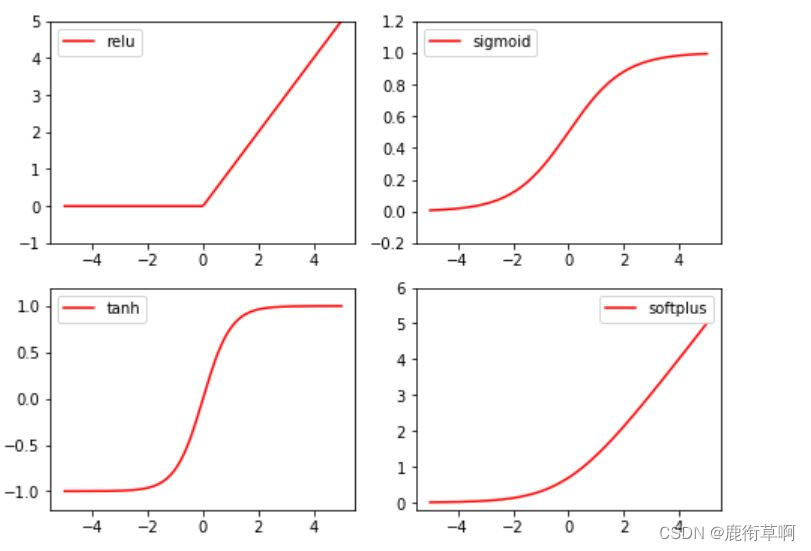
5. Regression
import torch
import torch.nn.functional as F # 激勵函數都在這
import matplotlib.pyplot as plt
x = torch.unsqueeze(torch.linspace(-1, 1, 100), dim=1) # x data (tensor), shape=(100, 1)
y = x.pow(2) + 0.2*torch.rand(x.size()) # noisy y data (tensor), shape=(100, 1)
# 畫圖
plt.scatter(x.data.numpy(), y.data.numpy())
plt.show()

torch.unsqueeze(input, dim, out=None) 作用:擴展維度 返回一個新的張量,對輸入的既定比特置插入維度 1 注意: 返回張量與輸入張量共享內存,所以改變其中一個的內容會改變另一個
torch.linspace(start, end, steps=100, out=None) 返回一個1維張量,包含在區間start和end上均勻間隔的step個點。輸出張量的長度由steps决定。
參數: start (float) - 區間的起始點 end (float) - 區間的終點 steps (int) - 在start和end間生成的樣本數 out (Tensor, optional) - 結果張量
torch.rand(*sizes, out=None) → Tensor 返回一個張量,包含了從區間[0,1)的均勻分布中抽取的一組隨機數,形狀由可變參數sizes 定義。
參數: sizes (int…) – 整數序列,定義了輸出形狀 out (Tensor, optinal) - 結果張量
6. 建立神經網絡
class Net(torch.nn.Module): # 繼承 torch 的 Module
def __init__(self, n_feature, n_hidden, n_output):
super(Net, self).__init__() # 繼承 __init__ 功能
# 定義每層用什麼樣的形式
self.hidden = torch.nn.Linear(n_feature, n_hidden) # 隱藏層線性輸出
self.predict = torch.nn.Linear(n_hidden, n_output) # 輸出層線性輸出
def forward(self, x): # 這同時也是 Module 中的 forward 功能
# 正向傳播輸入值, 神經網絡分析出輸出值
x = F.relu(self.hidden(x)) # 激勵函數(隱藏層的線性值)
x = self.predict(x) # 輸出值
return x
net = Net(n_feature=1, n_hidden=10, n_output=1)
print(net)

net2 = torch.nn.Sequential(
torch.nn.Linear(1, 10),
torch.nn.ReLU(),
torch.nn.Linear(10, 1)
)
print(net2)

7. 訓練網絡
# optimizer 是訓練的工具
optimizer = torch.optim.SGD(net.parameters(), lr=0.2) # 傳入 net 的所有參數, 學習率
loss_func = torch.nn.MSELoss() # 預測值和真實值的誤差計算公式 (均方差)
epochs = 200
plt.ion() # 畫圖
plt.show()
for t in range(epochs):
prediction = net(x) # 喂給 net 訓練數據 x, 輸出預測值
loss = loss_func(prediction, y) # 計算兩者的誤差
optimizer.zero_grad() # 清空上一步的殘餘更新參數值
loss.backward() # 誤差反向傳播, 計算參數更新值
optimizer.step() # 將參數更新值施加到 net 的 parameters 上
#畫圖
if t % 5 == 0:
# plot and show learning process
plt.cla()
plt.scatter(x.data.numpy(), y.data.numpy())
plt.plot(x.data.numpy(), prediction.data.numpy(), 'r-', lw=5)
plt.text(0.5, 0, 'Loss=%.4f' % loss.data.numpy(), fontdict={
'size': 20, 'color': 'red'})
plt.pause(0.1)
边栏推荐
- Distributed ID
- 【已解决】Unknown error 1146
- How long is the fastest time you can develop data API? One minute is enough for me
- Read config configuration file of vertx
- 最全SQL与NoSQL优缺点对比
- I. D3.js hello world
- C WinForm framework
- La différence entre le let Typescript et le Var
- Vertx's responsive MySQL template
- sharepoint 2007 versions
猜你喜欢
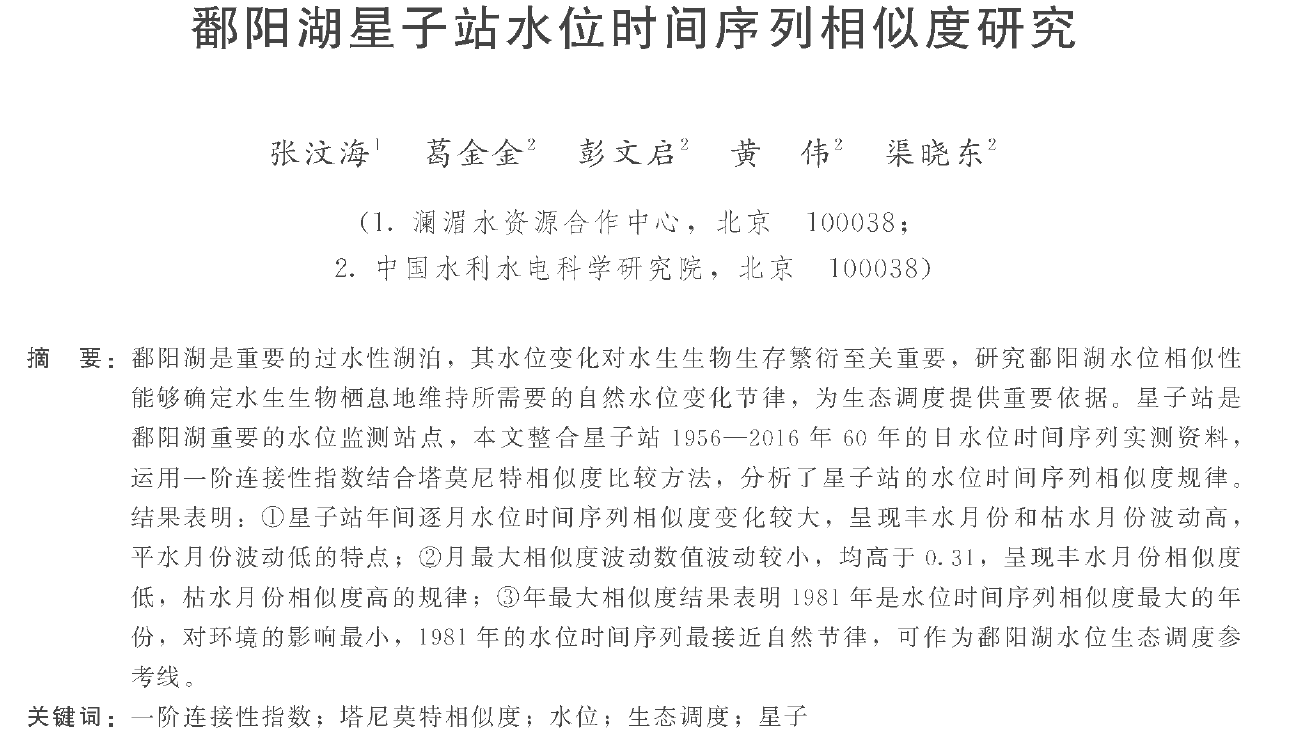
论文学习——鄱阳湖星子站水位时间序列相似度研究
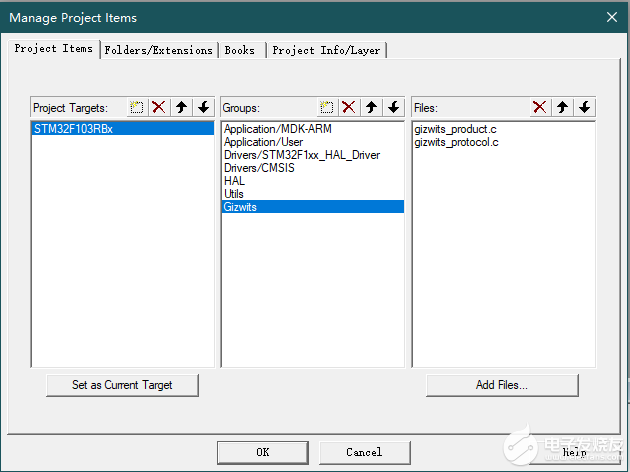
【开发笔记】基于机智云4G转接板GC211的设备上云APP控制
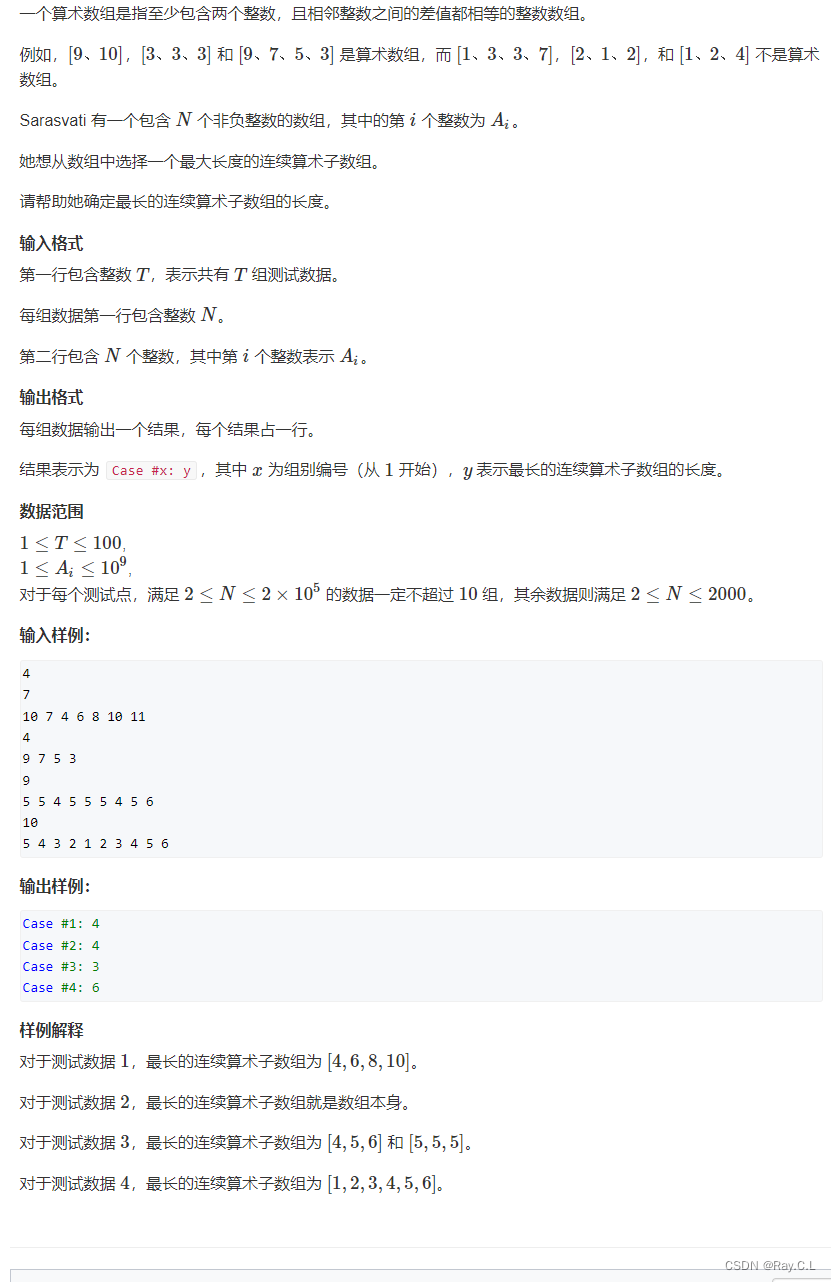
3311. Longest arithmetic

File operation serialization recursive copy
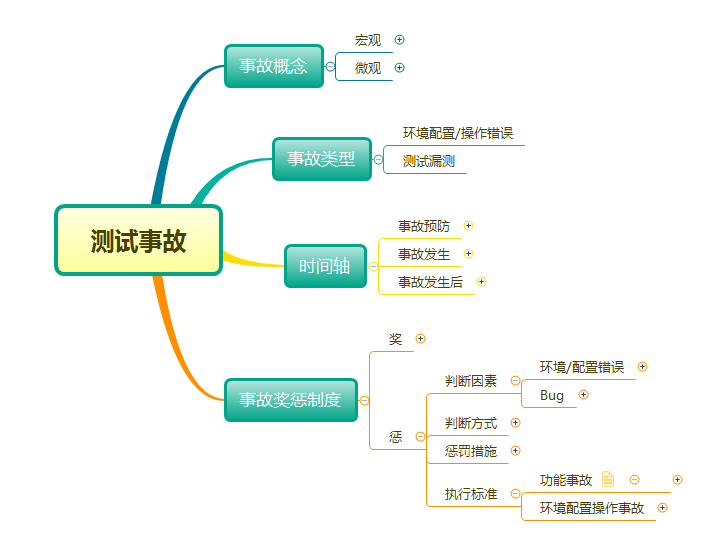
Take you through the whole process and comprehensively understand the software accidents that belong to testing

Le Seigneur des anneaux: l'anneau du pouvoir

VMWare网络模式-桥接,Host-Only,NAT网络

Topic | synchronous asynchronous

TreeMap
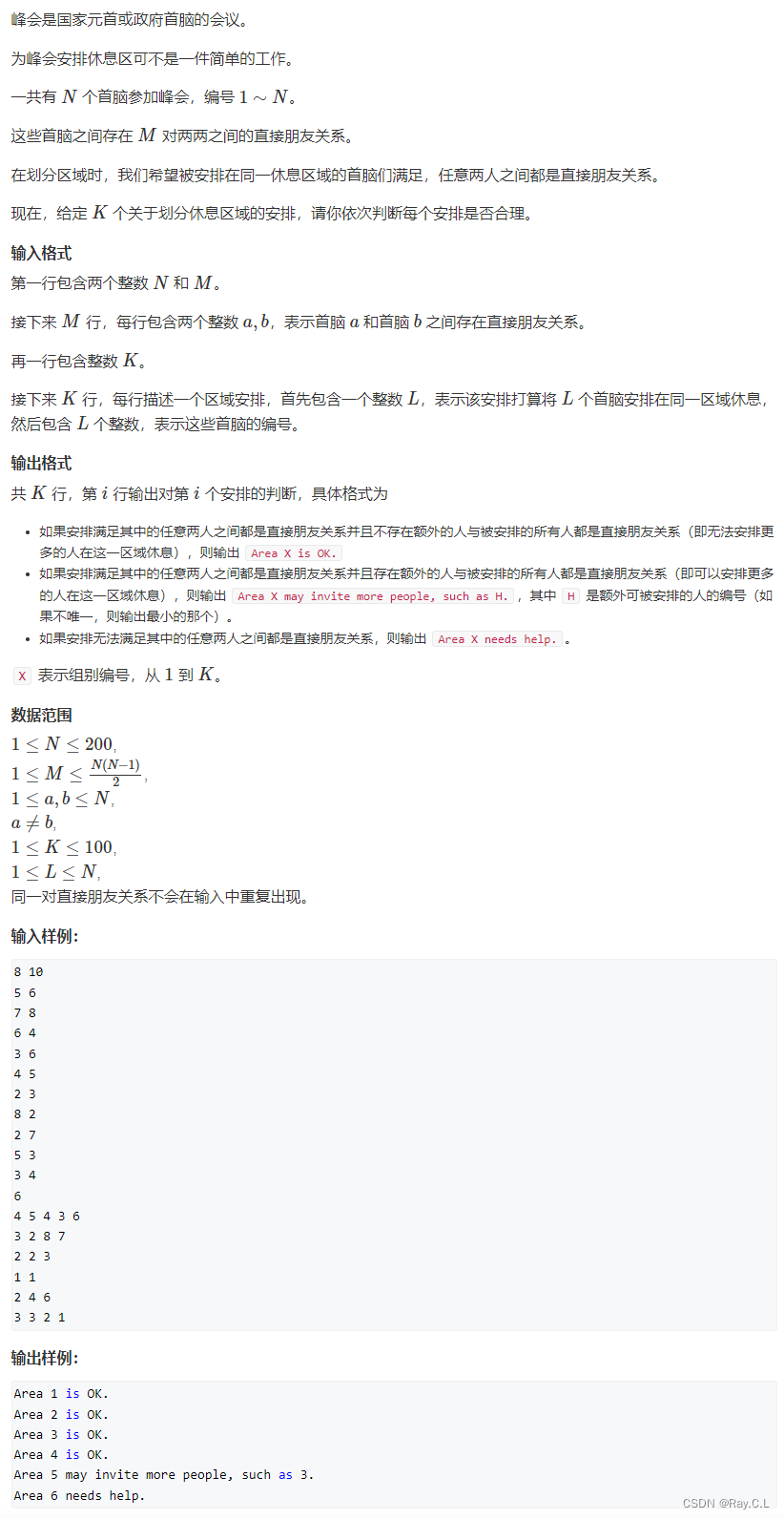
Pat grade a real problem 1166
随机推荐
Vertx's responsive redis client
Summary of Arduino serial functions related to print read
Basic knowledge about SQL database
Logging log configuration of vertx
Advanced APL (realize group chat room)
The embodiment of generics in inheritance and wildcards
【开发笔记】基于机智云4G转接板GC211的设备上云APP控制
The babbage industrial policy forum
高并发内存池
Split small interface
2. E-commerce tool cefsharp autojs MySQL Alibaba cloud react C RPA automated script, open source log
Dora (discover offer request recognition) process of obtaining IP address
Talk about floating
[solved] sqlexception: invalid value for getint() - 'Tian Peng‘
Common problems in io streams
PgSQL converts string to double type (to_number())
Leetcode 198: 打家劫舍
[solved] win10 cannot find a solution to the local group policy editor
Visit Google homepage to display this page, which cannot be displayed
【CoppeliaSim4.3】C#调用 remoteApi控制场景中UR5